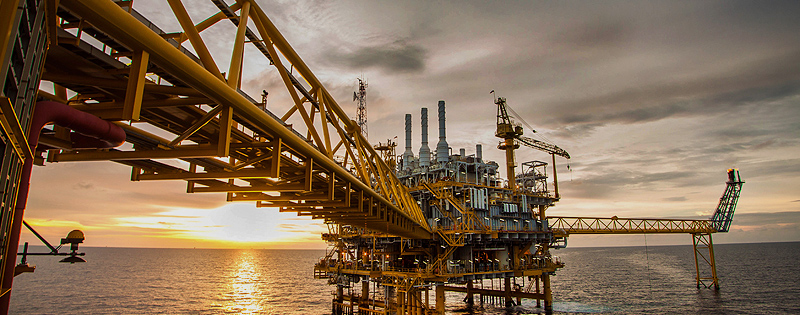Enter the realm of cutting-edge defence technology and space exploration with Mechvac Technologies Pvt Ltd’s vacuum pump solutions, meticulously engineered and manufactured in India. Our vacuum pumps are designed to meet the exacting demands of the defence and space industries, offering unparalleled performance, reliability, and precision. From aerospace propulsion systems to satellite instrumentation, our vacuum pumps play a pivotal role in advancing defence capabilities and exploring the depths of space.
Key Applications of Vacuum Pumps in the Defense and Space Industry
1. Space Simulation and Testing
Thermal Vacuum Testing: Vacuum pumps are crucial in thermal vacuum chambers used for simulating the extreme conditions of outer space. These chambers create a vacuum environment combined with controlled temperatures to test the performance and reliability of spacecraft components, satellites, and instruments. Vacuum-assisted thermal testing ensures that equipment can withstand the vacuum, temperature variations, and radiation encountered in space.
Vacuum Bakeout: Vacuum pumps are used for bakeout processes to remove contaminants and moisture from spacecraft components before launch. Vacuum-assisted bakeout improves the reliability and longevity of electronics, sensors, and propulsion systems by preventing outgassing and maintaining vacuum cleanliness standards in space applications.
2. Propulsion Systems
Rocket Engine Testing: Vacuum pumps play a critical role in vacuum chambers used for testing rocket engines and propulsion systems. These pumps create the low-pressure conditions necessary to simulate the high-altitude environment and vacuum of space. Vacuum-assisted engine testing verifies performance, thrust efficiency, and reliability under simulated space conditions, ensuring safe and successful launches.
Thruster Development: Vacuum pumps are employed in testing and developing thrusters for spacecraft attitude control and stationkeeping. Vacuum-assisted testing evaluates thruster performance in reduced-pressure environments to optimize fuel efficiency, maneuverability, and operational reliability in space missions.
3. Satellite Manufacturing and Testing
Solar Panel Deployment Testing: Vacuum pumps assist in testing the deployment and functionality of solar panels on satellites and spacecraft. Vacuum-assisted deployment tests verify the reliability and mechanical integrity of solar arrays in the vacuum of space, ensuring they unfold correctly and generate sufficient power for satellite operations.
Electronics Testing and Reliability: Vacuum pumps are used in space-grade electronics testing to verify the reliability and functionality of onboard systems under vacuum conditions. Vacuum-assisted testing ensures that electronic components and circuits can operate efficiently in the absence of atmospheric pressure, minimizing risks of malfunction or failure during space missions.
4. Space Instrumentation and Scientific Research
Vacuum Chambers for Instrument Calibration: Vacuum pumps create the necessary low-pressure environments for calibrating sensitive scientific instruments used in space exploration, such as spectrometers, telescopes, and detectors. Vacuum-assisted calibration ensures accurate measurements and data acquisition in space missions, enabling scientific research and discovery in astronomy, planetary science, and astrophysics.
Vacuum Insulation for Cryogenic Systems: Vacuum pumps are utilized in cryogenic systems and vacuum-insulated containers to maintain ultra-low temperatures required for storing and transporting cryogenic fuels, propellants, and scientific samples in space missions. Vacuum-assisted insulation minimizes heat transfer and maintains thermal stability, critical for preserving cryogenic fluids and materials in space environments.
5. Materials Research and Development
Vacuum Metallurgy: Vacuum pumps facilitate vacuum metallurgy processes for manufacturing specialized alloys and materials used in aerospace and defense applications. Vacuum-assisted melting, casting, and heat treatment produce high-performance metals with superior mechanical properties, corrosion resistance, and thermal stability for aircraft, spacecraft, and military hardware.
Vacuum Deposition and Coating: In space technology, vacuum pumps are essential for thin film deposition and coating processes used to apply protective and functional coatings to spacecraft components. Vacuum-assisted deposition enhances surface properties such as thermal management, reflectivity, and durability of materials exposed to harsh space conditions, extending the lifespan and performance of spacecraft systems.
6. Satellite Propulsion and Orbit Adjustments
Ion Propulsion Systems: Vacuum pumps support the development and testing of ion thrusters and electric propulsion systems used for satellite propulsion and orbital maneuvers. Vacuum-assisted testing validates the efficiency, thrust-to-weight ratio, and operational lifespan of ion engines in achieving precise orbital adjustments and prolonged mission durations in space.
Orbital Maintenance and Debris Mitigation: Vacuum pumps assist in developing systems for capturing and removing space debris to mitigate collision risks with satellites and spacecraft. Vacuum-assisted technologies enable efficient debris removal maneuvers and orbital maintenance operations, safeguarding operational satellites and ensuring safe navigation in space.
7. Spacecraft Assembly and Contamination Control
Cleanroom Environments: Vacuum pumps are employed in maintaining cleanroom environments during spacecraft assembly and integration processes. Vacuum-assisted contamination control removes airborne particles and contaminants, ensuring the cleanliness and integrity of spacecraft components and subsystems before launch. This prevents performance degradation and mission failures due to particle contamination in sensitive space equipment.
Vacuum Handling and Manipulation: Vacuum pumps enable precise handling and manipulation of delicate spacecraft components and payloads during assembly, testing, and integration phases. Vacuum-assisted handling systems provide secure attachment and positioning of equipment in microgravity conditions, supporting efficient spacecraft assembly and deployment in space missions.
The MT Series is an excellent choice Defense and Space Industry, offering a range of benefits that can greatly enhance your Defense and Space Industry operations:
MT Series benefits: –
Reduce Energy Consumption: The MT Series is designed with energy efficiency in mind, helping to reduce energy consumption during operation. By minimizing energy usage, you can lower your utility costs and contribute to sustainability efforts.
Save on Maintenance Costs: With its robust construction and reliable performance, the MT Series requires minimal maintenance compared to other vacuum pumps. This helps you save on maintenance costs while ensuring consistent operation and longevity of the equipment.
Maximize Operational Reliability: The MT Series is known for its exceptional reliability and durability, providing uninterrupted operation even in demanding packaging environments. With dependable performance, you can minimize downtime and maintain productivity levels.
Increase Production Output: By streamlining the vacuum packaging process and optimizing efficiency, the MT Series helps increase production output. Its high-performance capabilities enable faster evacuation of air from packaging, allowing you to meet higher production demands.
Protect the Environment: The MT Series is designed with environmental sustainability in mind. Its energy-efficient operation and reduced maintenance requirements contribute to lower carbon emissions and environmental impact. By choosing the MT Series, you’re taking proactive steps towards protecting the environment.
MT Series images





